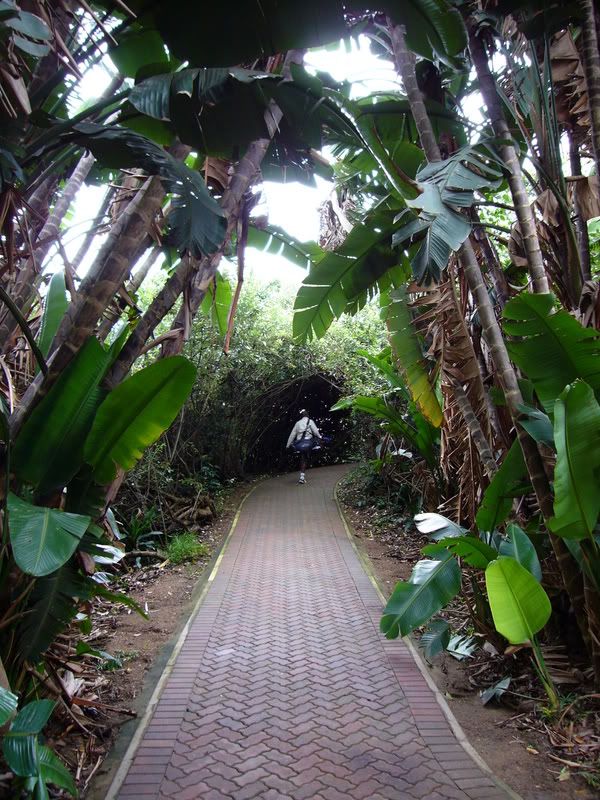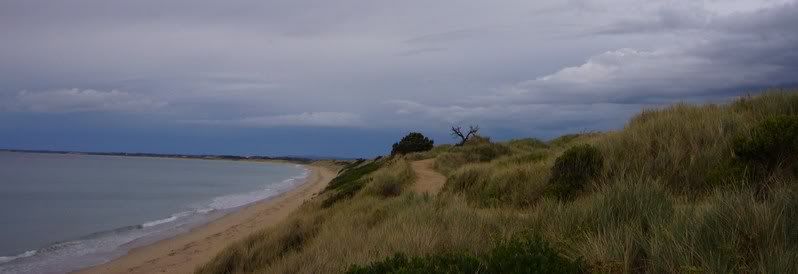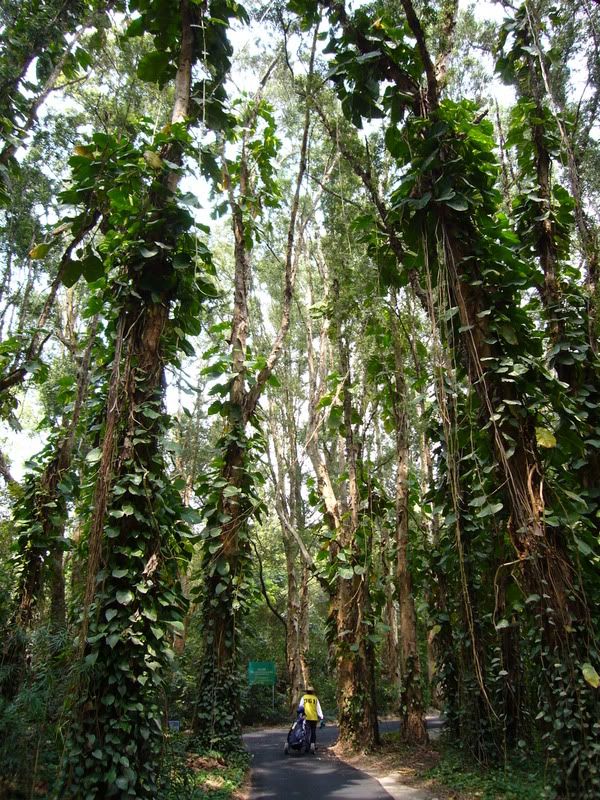The walker's mantra is, "Tees close to greens." And yet on some otherwise very walkable courses you come upon a longish green-to-tee walk.
When done right, I have not considered these walks routing flaws at all. To me, they are like pauses -- or even better, like passageways, wormholes into the odyssey that is the round of golf. (It is said there are seven basic stories, one of which being "odyssey," the hero's taxing journey home.)
I think of them as wormholes because they are most effective when there is a sense of the golfer's "detachment" or "embarkation" from the "civilized world;" e.g., a connection to the clubhouse.
My question is, despite my appreciation, would any designer whose stated aim was a walkable course consciously introduce a wormhole? Or do you always consider these unfortunate concessions to an otherwise-excellent routing? (And how would Desmond Muirhead answer these questions?)
For me, the two criteria that make for excellent wormholes are:
1. Reasonably early in the round, although I think Yale gets away with a mid-round one; and
2. The course post-wormhole is somehow disconnected from the clubhouse, or from other parts of the course.
(I have yet to find a wormhole on a links but remain hopeful. Maybe one of those links with massive landforms...)
Even if they don't quite meet the criteria, I still like them as pauses. You know, "palate cleansers." IMHO, to be of high quality as a palate cleanser, the passageway must "manifest the sacred" of the location: they should use fauna unique to the place, not simply throw us into the rat hole that is a generic one-mile concrete cartpath. (Although I accept that might actually "manifest the sacred" of South Florida.)
Here are a few examples.
1. Yale, from 9 green to 10 tee: not including cart path, there actually is a choice of high road or low road. The high road feels more like a wormhole, for it is a walk through woods that disconnects you from the 9th very effectively. It involves exertion. It also feels like a wormhole because once you're off the 10th tee, your departure from "civilization" is realized. On the first nine holes, you're sort of bouncing around, never all that far from the clubhouse, or at least never feeling a sense of estrangement.
I liken playing the front nine to running from store to store, collecting provisions for the treacherous ocean crossing ahead.
Hitting off 10 tee then is the departure. I always found the back nine like an odyssey: you really don't see much of the other holes or other golfers. You do see a few telecommunication towers off to the side of 11, but those always seemed somehow remote. I never did have a good sense of where I was on the back nine, unlike on the front, for some reason...
2. Durban, post 3rd. This one felt like a departure, too, coming as it does early in the round. You will not see the clubhouse again until you reach 18 tee.
The road to estrangement at least is paved, even if the palm fronds look like evil mitts about to drag you into the darkness that lay just off the path...
The next three feel more like palate cleansers than wormholes.
3. Barnbougle dunes, post 4th. This one has elements of the wormhole. It's early in the round, and as the path brings you into contact with Anderson Bay and "
die ausland," it does introduce a beautiful desolation. (I saw only one person on the beach the entire time I spent on that path.)
The long walk from 4 green
4. Hong Kong Golf Club, post 16th.
In the footsteps of Caddie #361
5. Rockport Country Club, post 10th. This one's not necessarily too late to rise above palate cleanser to wormhole, but post-10 the course doesn't feel that different than pre-10. Live oaks (the mighty Quercus virginiana!) are particular to the Gulf Coast, though, and so like all the other pictures in this post flora are used if not to manifest the sacred, then at least to help us appreciate the specialness of this place.
Beautiful canopy
Do you have any favorites?
Mark